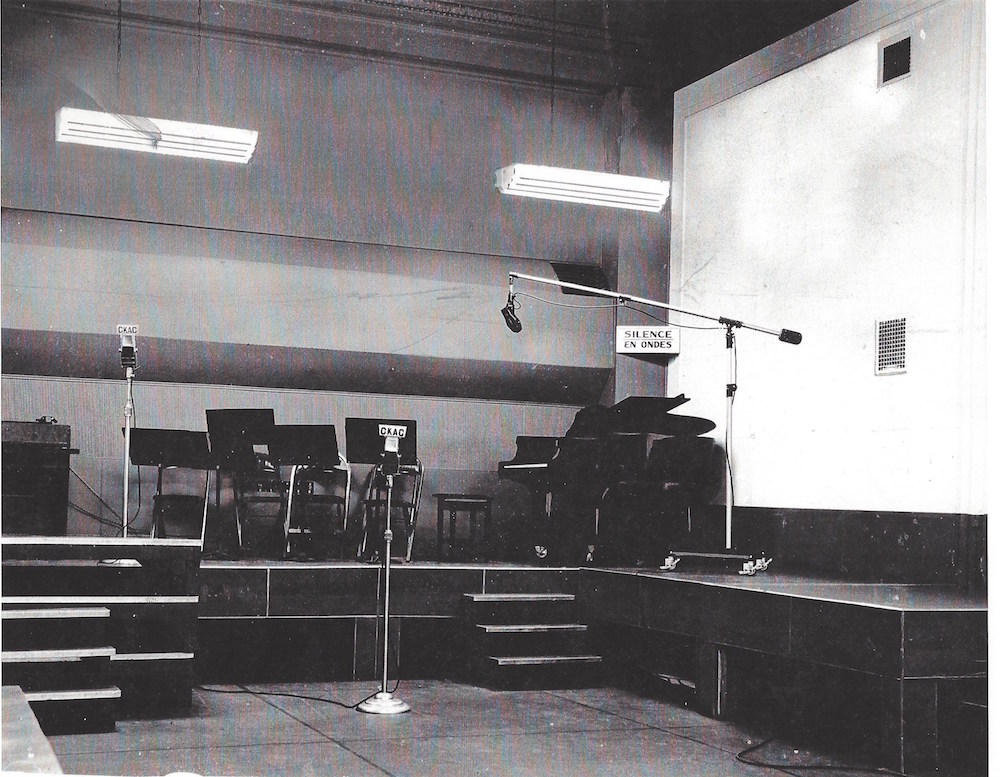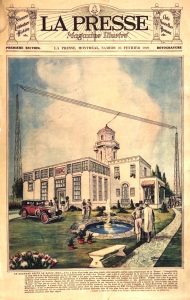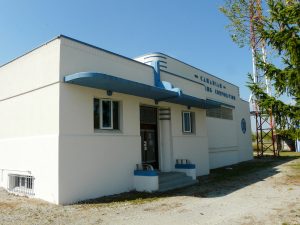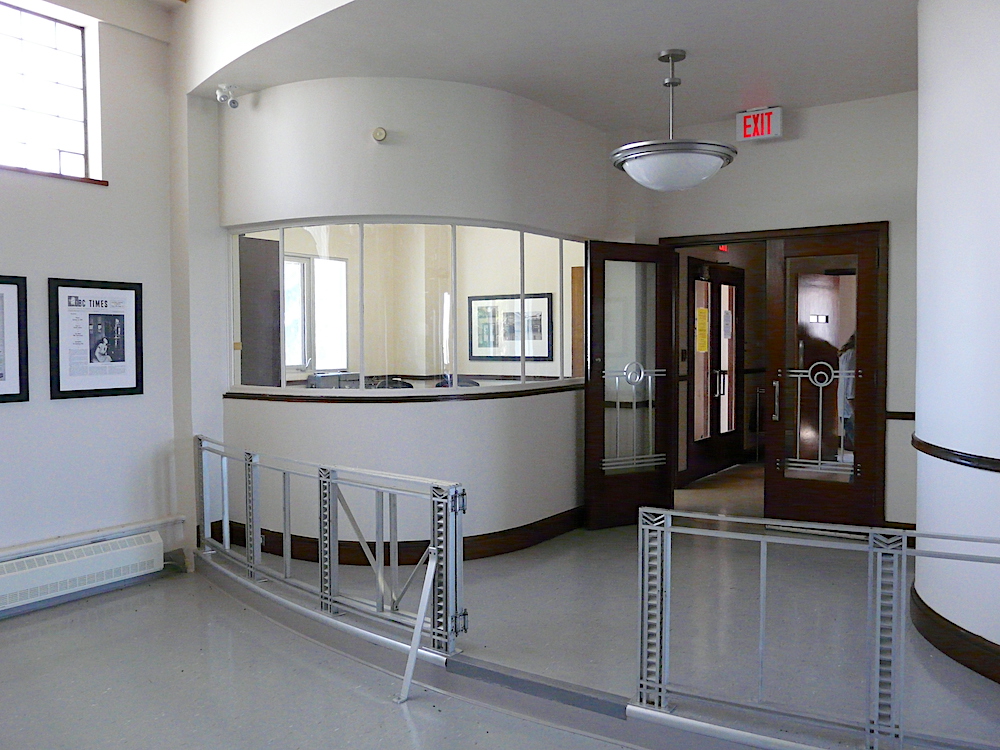Infrastructure
Radio seems like an invisible medium. Once you turn on the receiver, sound fills the room or headset. A new network of structures across the countryside brought this “wireless” magic into homes. Studios, which were often in cities, sent radio signals to transmission stations. These stations amplified the radio signals, so listeners across a larger region could tune in.

Studio Interior, Canadien Kilocycle Amérique Canada (CKAC) Radio Station (c.1940s), Montréal, Québec. Musée des ondes Emile Berliner.
Listen to the audio clip with transcript: “Earliest known recorded Canadian broadcasting”
An example of a pioneering station is CKAC in Montreal. The newspaper La Presse founded the station in 1922. In its first decade, CKAC produced its own French and English local programs. It broadcast a variety of content including news, theatre, music, and sports. CKAC also broadcast religious programs and radio shows for women and children. Beginning in 1929, the station broadcast from a new 5000-Watt transmission station located in St-Hyacinthe, Quebec, and in so doing was able to reach a broader audience outside Montreal. In that same year, CKAC also became an affiliate station of CBS (Columbia Broadcasting System) in the United States. This affiliation allowed it to exchange classical music concerts and receive American programs.

“Un nouveau poste de radio CKAC” (A new CKAC radio station), La Presse: Magazine Illustré (February 23, 1929), Montréal, Québec. Musée des ondes Emile Berliner.
In the early years, national broadcasts only occurred on radio to mark important events. Sir Henry Thornton, president of the Canadian National Railway (CNR) led the initiative for the first systematic attempt to create a national network of stations. Beginning in 1923, CNR passengers and hotel guests could listen to programs. The company’s own studios in Moncton, Ottawa, and Vancouver created the programs. CNR used its telegraph infrastructure to support simultaneous broadcasting service across the country.
In 1933, the radio infrastructure of the CNR transferred to the Canadian Radio Broadcasting Commission (CRBC). Three years later in 1936, the Canadian Broadcasting Corporation (CBC) replaced the CRBC. (Read more about this in the next chapter.) With stable government support, the CBC built a series of high-powered transmission stations across the country. The first to operate were those in Verchères, Quebec, and Hornby, Ontario, in 1937 followed by Sackville, New Brunswick, and Watrous, Saskatchewan, in 1939. Building high-power and repeater stations continued in the post WWII years. As a result, the entire country would have radio coverage.



